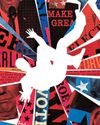
One day in the summer of 2020, Chuck Hoskin, Jr., the principal chief of the Cherokee Nation, and his daughter were driving through Tahlequah, Oklahoma, the location of the Cherokee Nation headquarters. Hoskin, who is forty-nine, had grown up understanding that he was a citizen of one of the country's largest tribal nations in terms of population-there are nearly half a million enrolled Cherokee citizens yet one of its smallest in terms of territory. But that had just changed. In McGirt v. Oklahoma, the United States Supreme Court ruled that a nineteenth-century treaty between the Muscogee Creek Nation and the U.S. was still in effect. The 5-4 decision ultimately resulted in the restoration of land to eight tribes and the conclusion that nearly half of Oklahoma, including most of the city of Tulsa, seventy miles northwest of Tahlequah, was tribal territory. As Hoskin drove through Tahlequah's quiet streetspast its antique stores and strip-mall plazas, its billboards advertising well drilling and Narcan and Jesus-the familiar town was made new with the realization that his daughter would grow up in a world where all of this was part of the Cherokee reservation.
The McGirt case represented an enormous and long-awaited restoration of sovereignty, "the ability of a group of people to manage their own affairs," as Hoskin put it. In Indian Country, which is the legal term for land reserved for tribes, tribal nations have authority over their citizens they can adjudicate legal cases, levy taxes, and impose municipal regulations. But, in Oklahoma, which apart from Alaska has the nation's highest proportion of Native residents, the state had long maintained that reservations—and, thus, much tribal authority-had ceased to exist in 1907, with statehood. Now two million Oklahomans-some of them tribal citizens, most of them not-were living on a reservation.
This story is from the August 12, 2024 edition of The New Yorker.
Start your 7-day Magzter GOLD free trial to access thousands of curated premium stories, and 9,000+ magazines and newspapers.
Already a subscriber ? Sign In
This story is from the August 12, 2024 edition of The New Yorker.
Start your 7-day Magzter GOLD free trial to access thousands of curated premium stories, and 9,000+ magazines and newspapers.
Already a subscriber? Sign In

YULE RULES
“Christmas Eve in Miller’s Point.”

COLLISION COURSE
In Devika Rege’ first novel, India enters a troubling new era.

NEW CHAPTER
Is the twentieth-century novel a genre unto itself?

STUCK ON YOU
Pain and pleasure at a tattoo convention.

HEAVY SNOW HAN KANG
Kyungha-ya. That was the entirety of Inseon’s message: my name.

REPRISE
Reckoning with Donald Trump's return to power.

WHAT'S YOUR PARENTING-FAILURE STYLE?
Whether you’re horrifying your teen with nauseating sex-ed analogies or watching TikToks while your toddler eats a bagel from the subway floor, face it: you’re flailing in the vast chasm of your child’s relentless needs.

COLOR INSTINCT
Jadé Fadojutimi, a British painter, sees the world through a prism.

THE FAMILY PLAN
The pro-life movement’ new playbook.

President for Sale - A survey of today's political ads.
On a mid-October Sunday not long ago sun high, wind cool-I was in Harrisburg, Pennsylvania, for a book festival, and I took a stroll. There were few people on the streets-like the population of a lot of capital cities, Harrisburg's swells on weekdays with lawyers and lobbyists and legislative staffers, and dwindles on the weekends. But, on the façades of small businesses and in the doorways of private homes, I could see evidence of political activity. Across from the sparkling Susquehanna River, there was a row of Democratic lawn signs: Malcolm Kenyatta for auditor general, Bob Casey for U.S. Senate, and, most important, in white letters atop a periwinkle not unlike that of the sky, Kamala Harris for President.